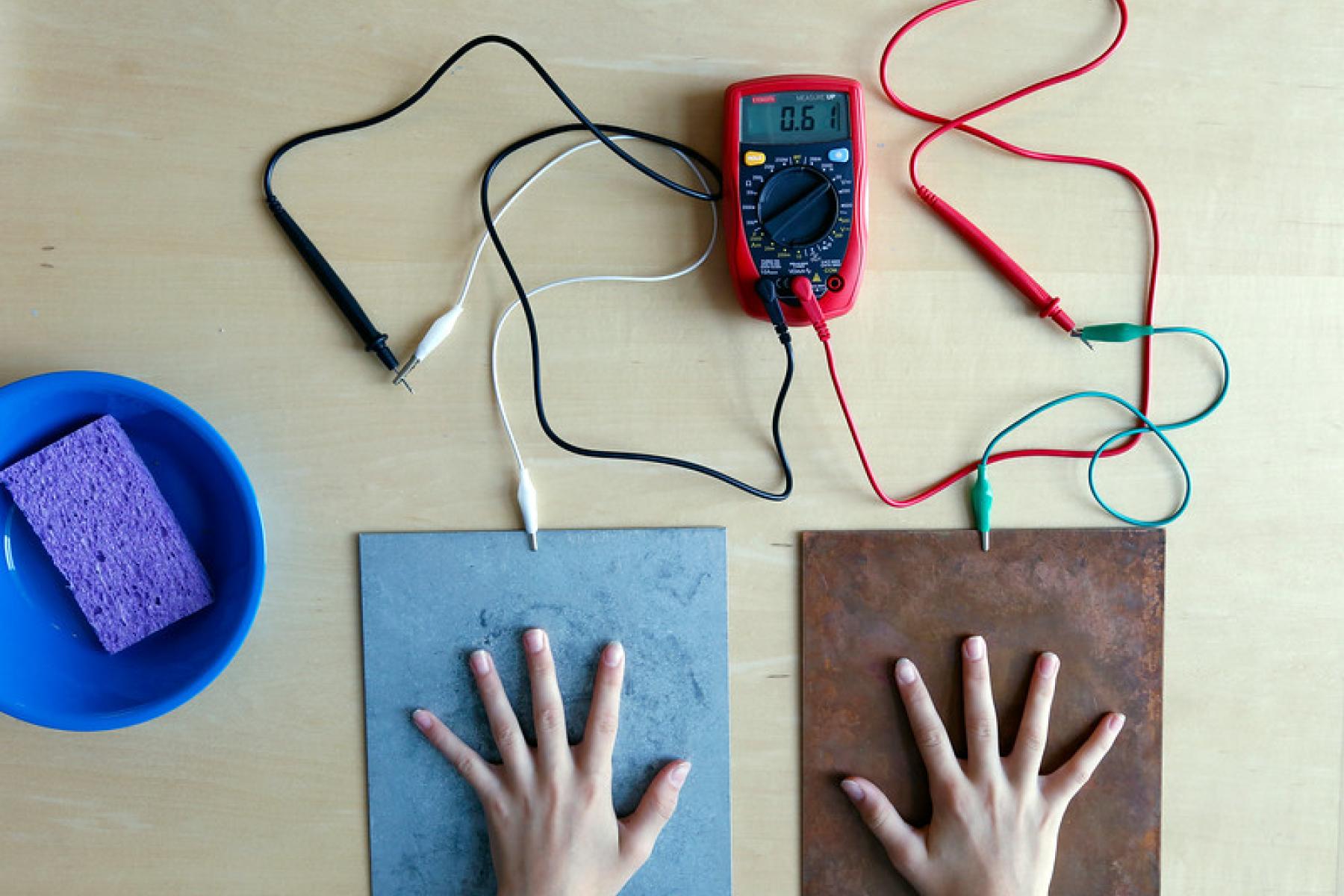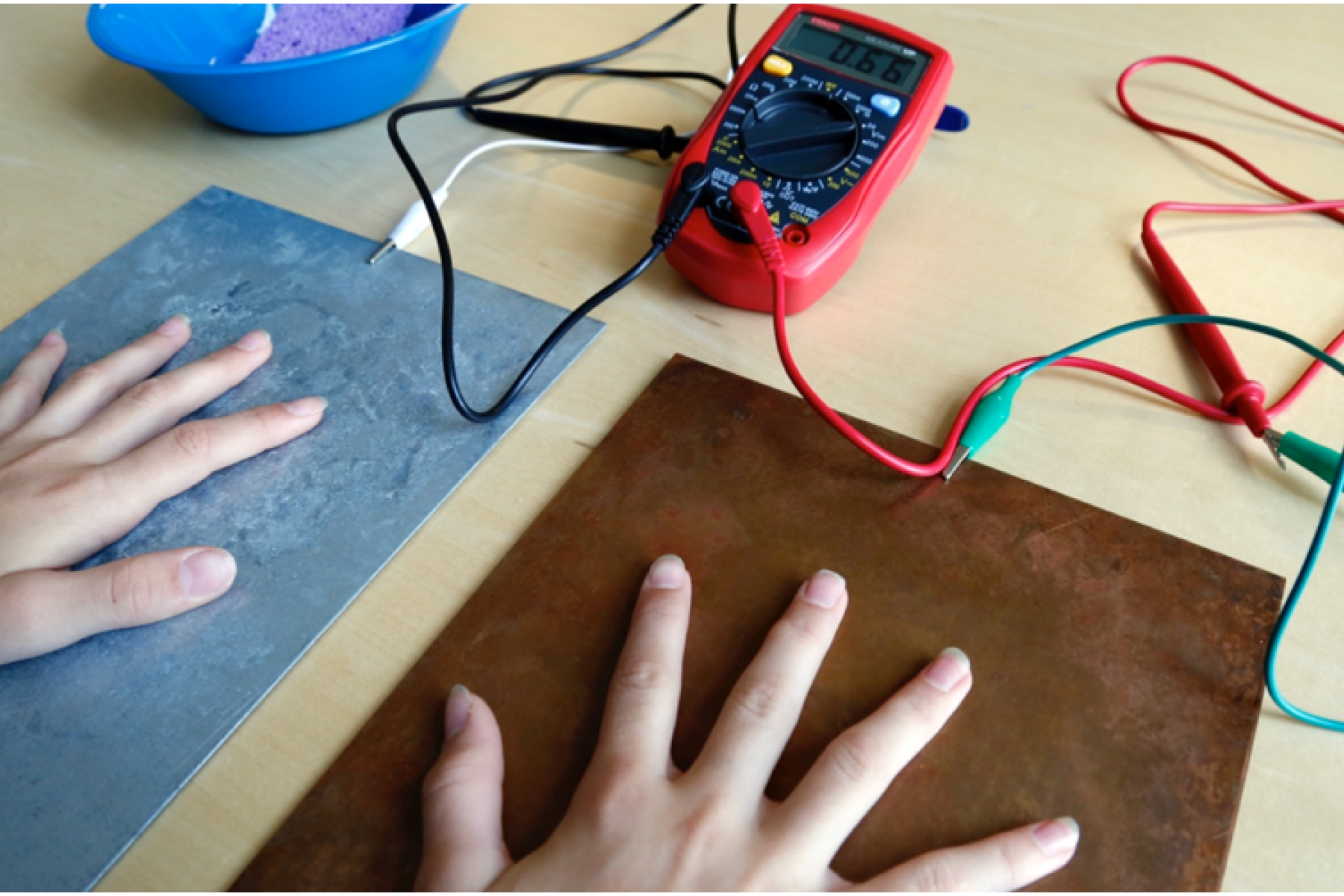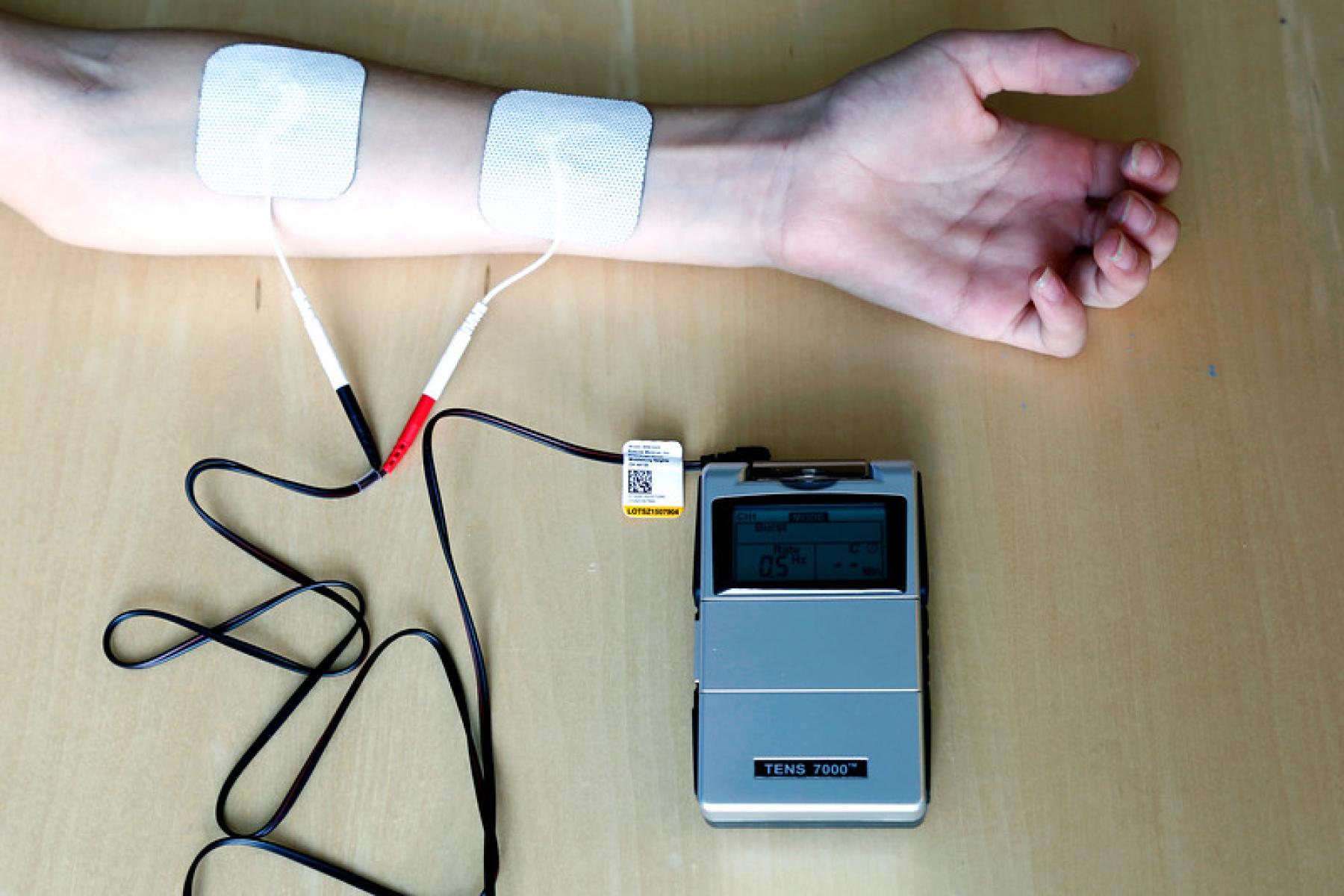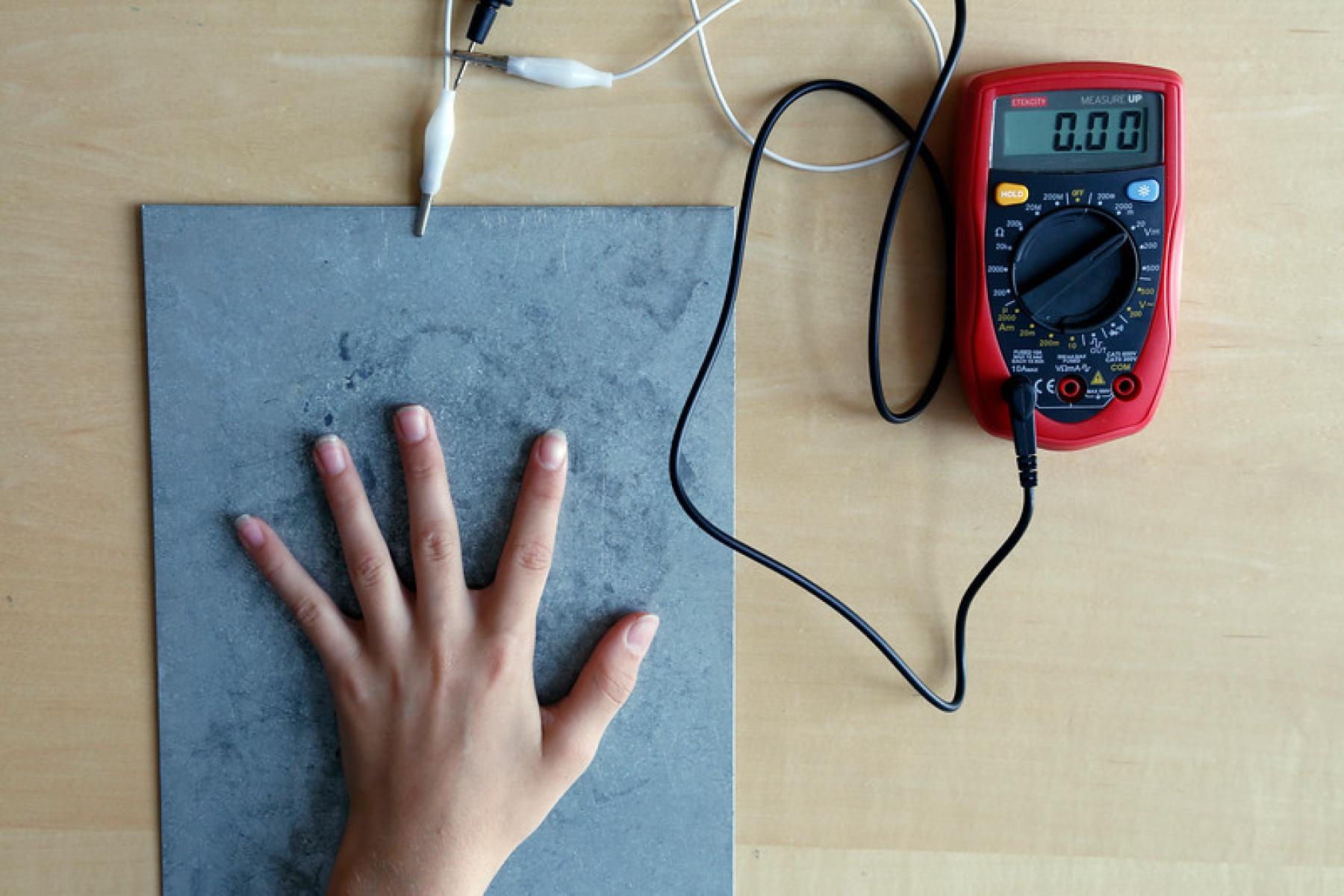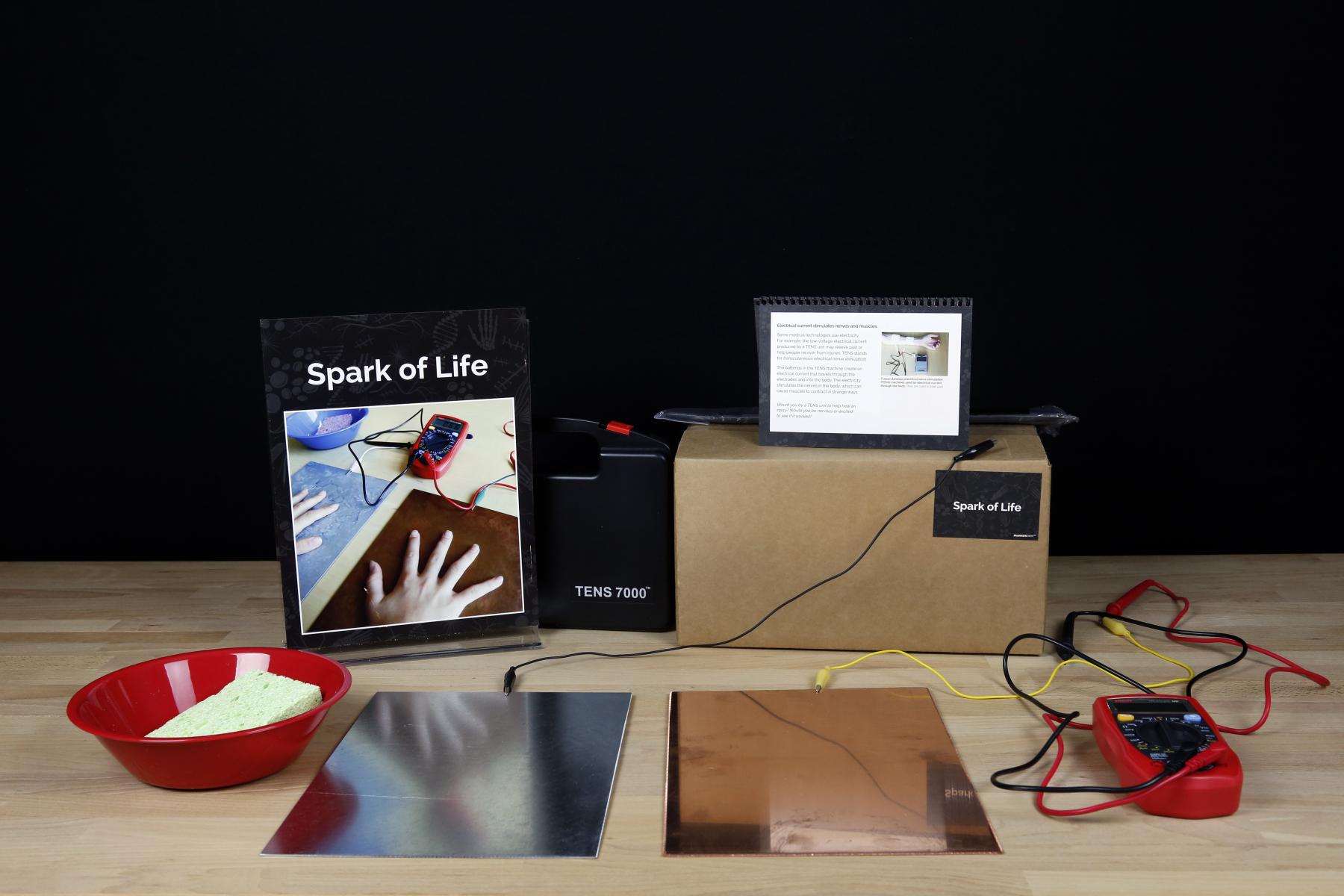DESCRIPTION
In this activity, learners will create a battery from two kinds of metal and their own body! This activity is designed to prompt conversation and reflection about responsible innovation, inspired by themes raised in Mary Shelley’s novel Frankenstein.
DESCRIPTION
In this activity, learners will create a battery from two kinds of metal and their own body! This activity is designed to prompt conversation and reflection about responsible innovation, inspired by themes raised in Mary Shelley’s novel Frankenstein.
TRAINING VIDEOS
OBJECTIVES
LEARNING GOALS
The primary objective of this activity is to encourage exploration and reflection about responsible innovation. In addition, learners will investigate the following concepts:
- People are creative! We’re always learning more about the world and inventing new things.
- It’s important to think ahead as we study science and make new technologies.
- Some medical technologies take advantage of the fact that your body can complete an electrical circuit.
Credits
This material is based upon work supported by the National Science Foundation under Grant Number DRL-1516684. Any opinions, findings, and conclusions expressed in this material are those of the authors and do not necessarily reflect the views of the National Science Foundation.
Creative Commons Attribution Non-Commercial Share Alike 3.0 United States (CC BY-NC-SA 3.0 US).
View more details

NISE Network products are developed through an iterative collaborative process that includes scientific review, peer review, and visitor evaluation in accordance with an inclusive audiences approach. Products are designed to be easily edited and adapted for different audiences under a Creative Commons Attribution Non-Commercial Share Alike license. To learn more, visit our Development Process page.

